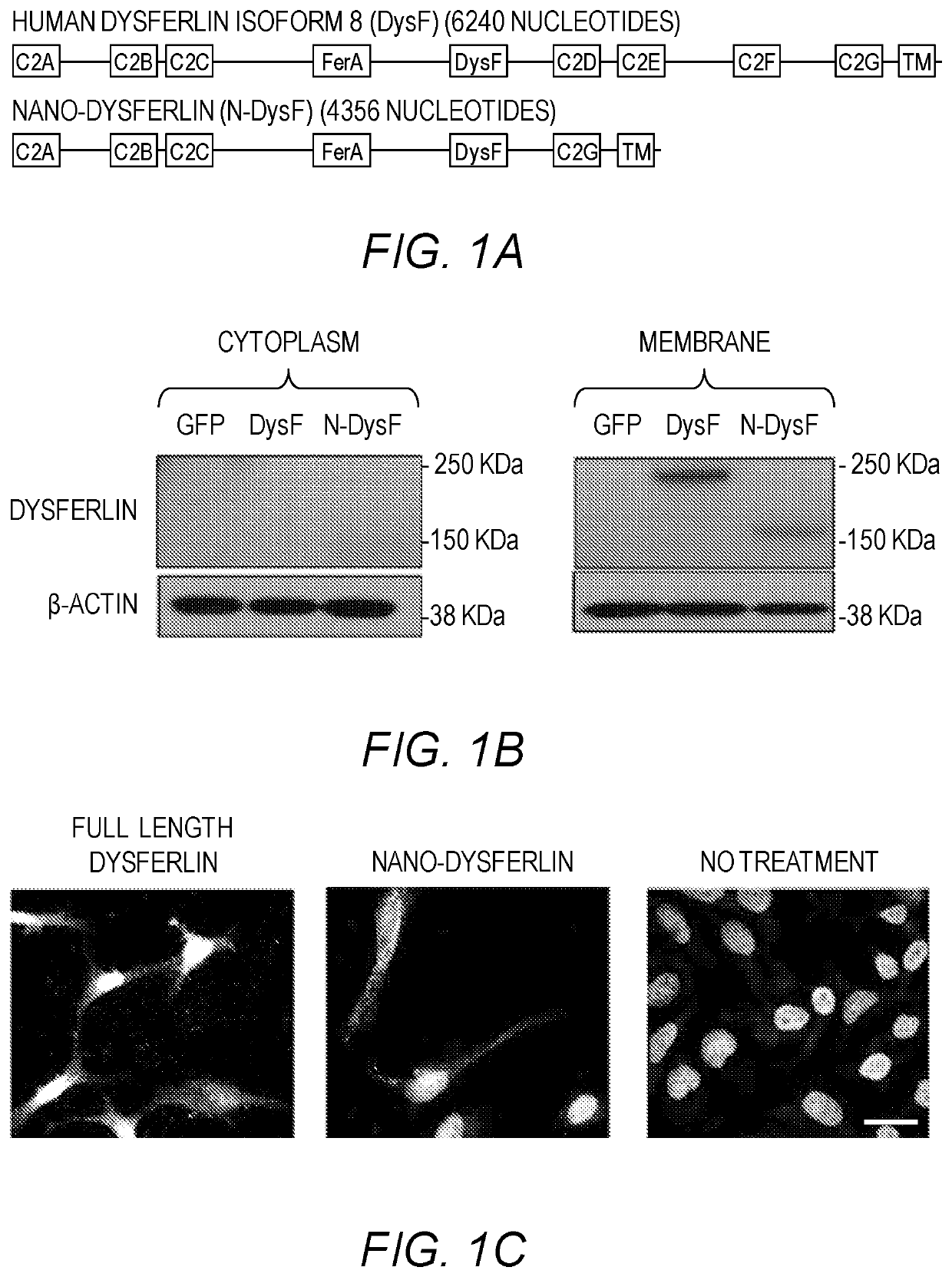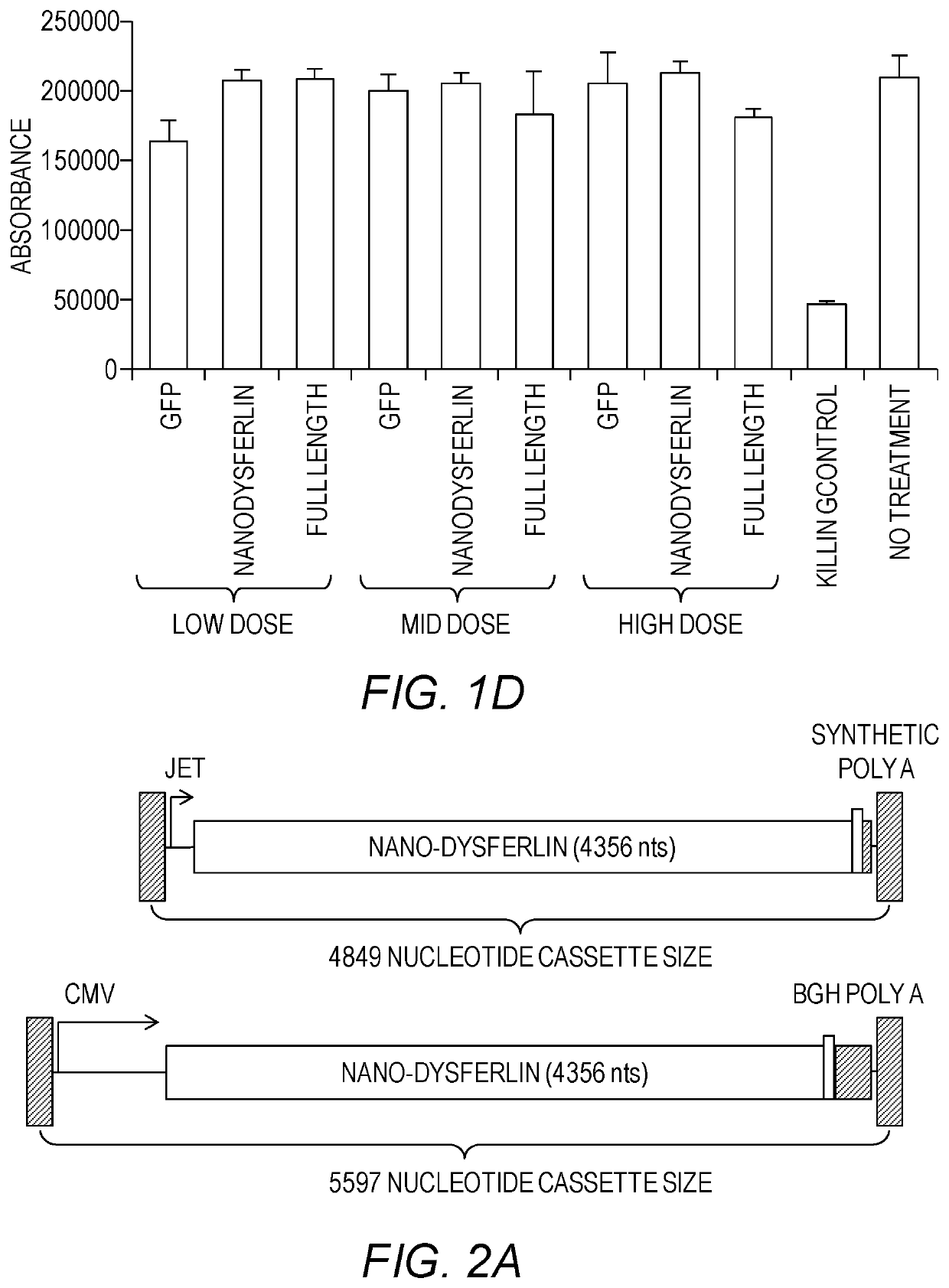Truncated dysferlin for treatment of dysferlinopathy
- Summary
- Abstract
- Description
- Claims
- Application Information
AI Technical Summary
Benefits of technology
Problems solved by technology
Method used
Image
Examples
example 1
Truncated Dysferlin
[0170]Several truncated human dysferlin clones were prepared. The sequences and domains are disclosed below. Residue numbering is based on human dysferlin isoform 8 (NP_003485.1) (SEQ ID NO:11). An alignment of the amino acid sequences of the clones is shown in Table 3 (SEQ ID NOS:6-11). Each of the clones was expressed in cells in vitro and demonstrated to produce dysferlin polypeptide.
[0171]Wild-type human dysferlin (isoform 8) (SEQ ID NO:11) [C2A,1:124]; [125:218]; [C2B,219:352]; [353:365]; [C2C,366:515]; [516:669]; [FerA,670:782]; [783:863]; [DysF,864:1097]; [1098:1136]; [C2D,1137:1281]; [1282:1313]; [C2E,1314:1465]; [1466:1578]; [C2F,1579:1696]; [1697:1788]; [C2G,1789:1994]; [1995:2044]; [TM,2045:2067]; [2068:2080]
Wild-type dysferlin Domain Summary: C2A, C2B, C2C, FerA, DysF, C2D, C2E, C2F, C2G, TM
[0172]Clone_318 No Flag (433) (SEQ ID NO:6) [C2A,1:124]; [147:155]; [157:166]; [172:180]; [187:192]; [199:205]; [C2B,222:352]; [353:365]; [C2C, 366:515]; [566:619];...
example 2
In Vivo Effect of Truncated Dysferlin
[0178]Previous attempts at constructing smaller dysferlin genes have discounted the fact that partially folded protein domains, as a result of inappropriate truncation, could mask any therapeutic value of the smaller gene. To alleviate this issue, careful attention was given to the structural characteristics of C2 domains in order to rationally define each domain of dysferlin. Each of the seven C2 domains in dysferlin was defined by eight predicted b strands, C2 domain topology, integrity of the Ca2+-binding site, if applicable, and continuity of the hydrophobic packing in the core of the domain (Table 2). The overall philosophy to construct Nano-Dysferlin is based on three rules. First, the central features of the ferlin family members, FerA and DysF, were maintained intact in all constructs. Second, the first C2A domain and the C2 domain next to the transmembrane span, C2G, were preserved in all constructs. Third, multiple tandem C2 domains con...
PUM
| Property | Measurement | Unit |
|---|---|---|
| Fraction | aaaaa | aaaaa |
Abstract
Description
Claims
Application Information
 Login to View More
Login to View More - R&D
- Intellectual Property
- Life Sciences
- Materials
- Tech Scout
- Unparalleled Data Quality
- Higher Quality Content
- 60% Fewer Hallucinations
Browse by: Latest US Patents, China's latest patents, Technical Efficacy Thesaurus, Application Domain, Technology Topic, Popular Technical Reports.
© 2025 PatSnap. All rights reserved.Legal|Privacy policy|Modern Slavery Act Transparency Statement|Sitemap|About US| Contact US: help@patsnap.com



